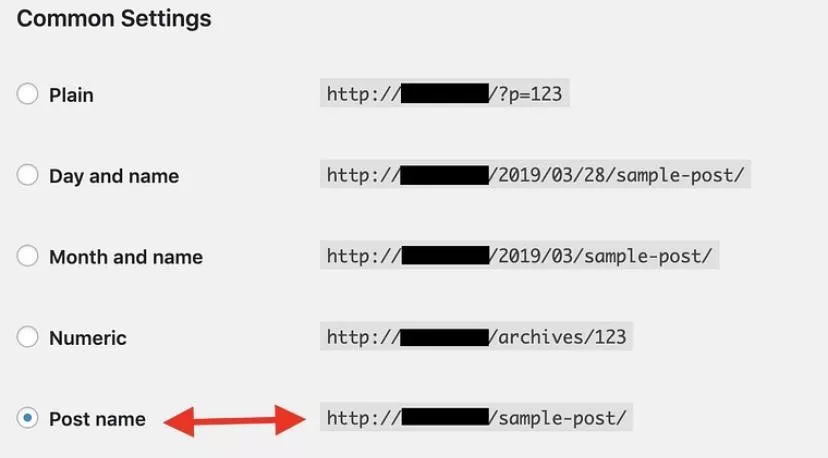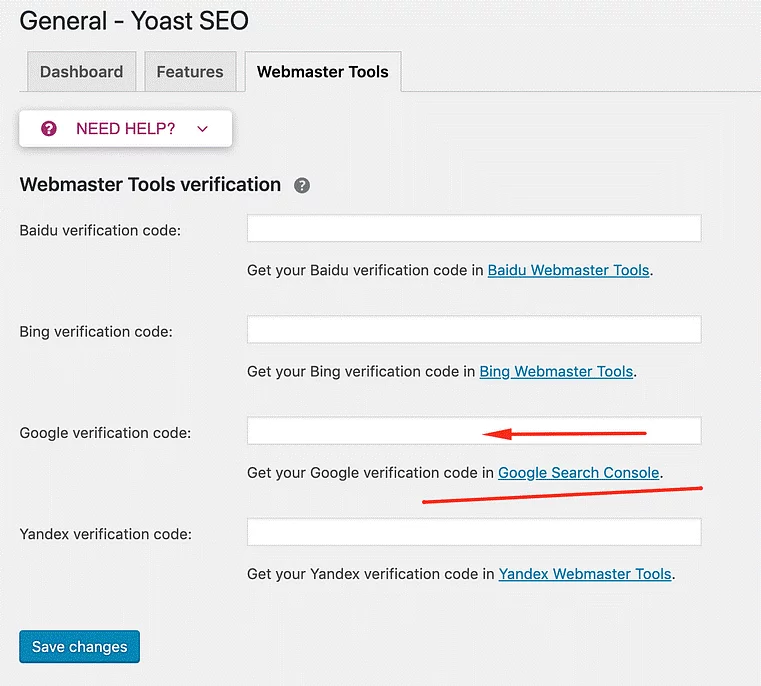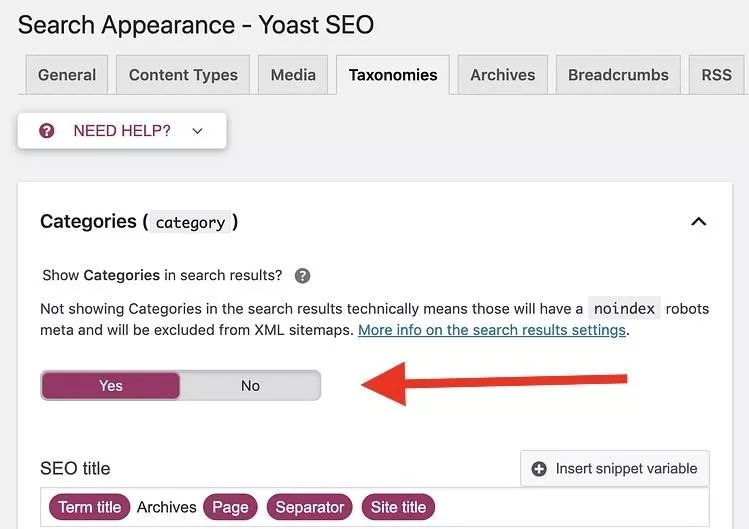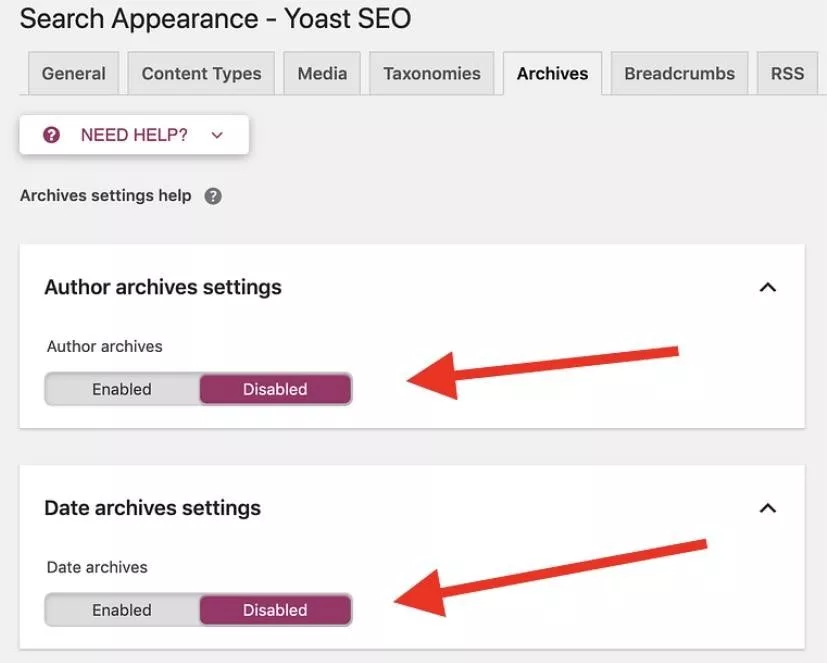Step into the captivating world of SEO settings, where the intricate craft of fine-tuning your website for search engines takes flight. In this ever-evolving digital realm, where being seen is of utmost importance, SEO settings lay the groundwork for elevating your online existence and ascending to the coveted summits of search engine rankings.
SEO settings encompass an array of technical arrangements, strategic decisions, and optimization methods that synergistically work together to render your website more amiable to search engines. They act as the fundamental elements, akin to building blocks, that construct a sturdy framework, enabling search engines to effortlessly crawl, index, and comprehend the content of your website.
1. Make sure search engines see you

When you embark on the journey of launching your very own blog, it’s crucial to ensure that search engines can find and index your site. WordPress, being a versatile platform, offers a built-in setting that allows you to control the visibility of your site to search engines. While this setting may be useful during the development phase or for private websites, it is essential to switch it off to ensure maximum visibility and reach for your blog.
To access this vital setting, navigate to the “Settings” menu and select “Reading.” Here, you will find the “Search Engine Visibility” setting. Take a moment to ensure that this setting is switched off to enable search engines to crawl and index your website effectively. By doing so, you are paving the way for your blog to be discovered by a wider audience, enhancing its chances of appearing in search engine results and attracting organic traffic.
Remember, this is one of the most important SEO settings for your WordPress blog. By taking the simple step of enabling search engine visibility, you are setting the foundation for greater visibility, reach, and success in the digital landscape. So, don’t forget to check this crucial box on your WordPress journey.
2. Finetune your permalinks
When it comes to optimizing your WordPress blog for SEO, fine-tuning your permalinks is an important step. Permalinks are the URLs that point to your individual blog posts and pages. By default, WordPress uses a structure that includes the post ID, which may not be the most user-friendly or SEO-friendly option.
To enable more user-friendly and SEO-friendly permalinks, navigate to your WordPress dashboard and click on “Settings” followed by “Permalinks.” From the available options, select the structure labeled “Post name.” This will allow you to customize the permalinks for each of your blog posts and pages.
WordPress has also become smarter in recent updates, automatically filtering out unnecessary words from default permalinks. For example, if your post is titled “Ten essential plugins for ecommerce websites,” WordPress may suggest a permalink like “essential-plugins-ecommerce-websites” or “essential-ecommerce-plugins,” removing the unnecessary word “for.”
To fine-tune your permalinks, you can edit them directly under the post title. If you don’t see the permalink field, make sure to save your draft, and it should appear after the page reloads.
The key idea here is to include the main keyword for the post in the permalink. This not only helps search engines understand the content of your page but also improves the readability and memorability of the URL for users.


By customizing and optimizing your permalinks, you are taking a significant step towards improving the SEO performance of your WordPress blog. So don’t forget to make use of this essential feature and make your permalinks more user-friendly and keyword-rich.
While it may not initially seem like an SEO setting, the importance of producing good content cannot be overstated. While it’s not the sole factor that determines your site’s ranking on Google, it plays a significant role. Google has become adept at recognizing what constitutes valuable content.
When writing, it’s essential to incorporate relevant keywords naturally. For instance, if you’re writing about “motorcycling helmet cleaners,” it’s appropriate to include that phrase a few times throughout your article. However, avoid overstuffing your content with keywords. Repeating your key phrase excessively within a paragraph won’t improve your ranking; in fact, it might even have a negative impact.
Strive for a balance between writing naturally and strategically incorporating keywords when relevant. Remember, moderation is key. Going overboard with keyword usage can be detrimental to your SEO efforts.
3. Write and write often

Maintaining a regularly updated site is also beneficial for SEO. Not only does it signal to Google that your site is active and relevant, but it also provides more content for search engines to evaluate and rank. Additionally, frequent updates enhance user engagement and retention, which is a double win for your website.
However, it’s important to exercise caution and avoid going to extremes. Overloading your site with numerous updates of similar content throughout the day can actually lower your ranking. Instead, focus on posting unique and valuable content 3-4 times a day if feasible. If that frequency isn’t possible, it’s better to publish one exceptional article per week rather than daily updates filled with fluff.
In summary, creating high-quality content and maintaining a consistent publishing schedule are essential SEO practices. By prioritizing valuable content creation and striking a balance with keyword usage, you can improve your site’s ranking and foster better user engagement. Remember, quality and moderation are crucial for long-term SEO success.
4. Enhance your website’s speed for optimal performance
The speed at which your website loads is a critical factor that not only impacts user experience but also plays a significant role in your SEO efforts. Google considers website speed when determining rankings, and it has several other effects that can impede your progress if not addressed.
Slow site speed contributes to early exits, high bounce rates, and longer page view times, directly affecting user satisfaction. As a result, you may experience a decrease in visitor retention, a decline in SEO rankings, and heightened visitor frustration.
To improve speed, especially in the WordPress ecosystem, utilizing managed WordPress hosting providers can make a significant difference.
By choosing any of these reputable managed WordPress hosts, including Nestify, you can offload the responsibility of managing essential SEO settings related to speed optimization. Their expert teams handle the technical aspects, allowing you to focus on other aspects of your website without having to delve into the technical details.
5. Optimize your categories and tags for effective content organization
In WordPress, categories and tags play a crucial role in organizing the content on your blog. Properly setting up categories and tags helps improve the user experience and provides valuable SEO benefits.
Here’s how you can optimize your categories and tags effectively:
- Categories: Categories are used to group your posts under broader topics. Choose relevant and descriptive category names that accurately represent the content within them. For example, if your blog focuses on food, you can create categories such as “Recipes,” “Tips and Tricks,” or “Restaurant Reviews.” Assign each blog post to a relevant category to ensure organized content navigation.
To add a category in WordPress, you can use the following code:
php
Copy code
<?php wp_insert_category( $category, $args = array() ); ?>
- Tags: Tags are used to highlight specific aspects or sub-topics within your posts. They provide more detailed information about the content and allow users to discover related articles. When creating tags, think about keywords or phrases that represent the key elements of your blog post. Using our food blog example, tags like “breakfast,” “dinner,” “recipes,” or “wine” would be appropriate for specific posts.
To add tags in WordPress, you can use the following code:
php
Copy code
<?php wp_set_post_tags( $post_id, $tags, $append ); ?>
Properly utilizing categories and tags offers significant SEO benefits. WordPress automatically generates separate archive pages for each category and tag. When users browse these archive pages, they can access a collection of related posts, enhancing their overall experience on your site.
By creating a well-structured category and tag hierarchy, you not only improve the organization of your content but also establish valuable resources for users and search engines alike.
Remember to choose relevant and specific categories and tags that accurately represent your content. Avoid overusing tags and ensure consistency throughout your blog. With an optimized category and tag structure, your website will be better equipped to attract and engage visitors while improving your overall SEO performance.
6. Maximize your SEO potential with an SEO plugin
When it comes to optimizing your WordPress site for search engines, using an SEO plugin is highly recommended. Among the top contenders, Yoast SEO stands out as one of the best options available. Continuously updated to align with search engine algorithms, Yoast SEO offers a comprehensive suite of tools to transform your site into an SEO powerhouse, effortlessly managing all your essential SEO settings.
The great thing about Yoast is its user-friendly nature. It comes pre-configured with default settings that work effectively right out of the box. However, investing a few minutes in fine-tuning specific aspects can yield significant benefits.
Here’s how you can optimize Yoast SEO to enhance your site’s SEO performance:
Verification with Google Search Console: Access the “SEO” menu in your WordPress dashboard and navigate to “General” and then “Webmaster Tools.” Provide the verification code from Google Search Console to establish a connection between your site and the search engine. This integration offers valuable insights and data about your site’s performance.

Content Types: In the “Search Appearance” section, explore the “Content Types” tab. Ensure that all options are enabled for both posts and pages. This allows Yoast SEO to analyze and optimize the SEO aspects of your content effectively.

Media: Enable the option to redirect attachment URLs to the actual attachments themselves. This ensures that your media content contributes positively to your site’s SEO and avoids any potential duplicate content issues.
Taxonomies: Under the “Taxonomies” tab, determine how you want to handle category and tag listings on your WordPress blog. If your blog has an extensive range of categories and tags, it’s advisable to show them in search results. On the other hand, if you have a limited number of categories or only one category, disabling them from search results can help prevent duplicate content problems.

Archives: WordPress automatically generates separate archives for categories, tags, author accounts, and date-based archives. For single-author blogs, it’s recommended to disable author archives. As for date archives, the decision is up to you, although disabling them is a common practice.

By adjusting these essential SEO settings within Yoast SEO, you can maximize your site’s search engine visibility and ensure that your content is optimized for optimal rankings. While the default settings work well, customizing these options allows you to fine-tune your SEO strategy and take full advantage of the plugin’s capabilities.
7. Enhance your SEO with optimized images

Optimizing your images is a crucial aspect of SEO that is often overlooked but can significantly impact your website’s performance. By paying attention to image captions, alt text, and file names, you can gain an SEO edge and improve your site’s visibility. While it may seem tedious to add these details to each image, the benefits far outweigh the minimal effort required.
When you add images to your posts, take the time to provide relevant information to Google by filling out the image name, ensuring the file name is readable, and adding a caption and alt text. These elements provide valuable context to search engines and enhance the overall understanding of your content.
With these optimizations in place, search engines can better comprehend the purpose and relevance of your images, ultimately contributing to improved rankings and visibility in search results.
In addition to optimizing image metadata, it’s essential to handle the image files themselves properly. Images can consume significant disk space on your server and impact the loading speed of your web pages. Slow-loading sites not only suffer from lower search engine rankings but also risk losing visitors who are unwilling to wait more than a couple of seconds for a page to load.
To address this issue, you can utilize an image optimization plugin that automates the process of optimizing your image files. One highly recommended solution is Optimole, which effectively manages your image files and ensures they are properly optimized for web delivery. By automatically compressing and optimizing images, Optimole helps reduce file sizes without compromising quality, resulting in faster page loading times and improved user experience.
8. Craft compelling post titles

The titles of your posts carry immense significance as they serve as the initial point of contact for both search engines and users. They are the first impression your content makes, capturing the attention of readers and providing crucial information to search engines. Striking the right balance between being catchy for users and keyword-targeted for search engines is essential.
While prioritizing user appeal is often recommended, it’s important to find a middle ground that satisfies both user engagement and search engine optimization. A captivating title can entice users to click and explore your content, while a keyword-targeted title provides search engines with valuable information about the page’s topic and relevance.
Remember that search engines display the meta title in search results, which influences how users perceive your content. Therefore, it’s crucial to optimize the meta title to accurately represent your page and attract potential visitors.
"SEO is not about gaming the system; it's about learning how to play by the rules." - Phil Frost
9. Utilize essential SEO settings for your posts

Within the snippet editor, you can customize the meta title, meta description, and URL slug to optimize the visibility and click-through rate of your posts on search engine results pages. By setting a focus keyword, you’ll receive an evaluation of how well your post aligns with SEO best practices, offering insights to improve its search engine performance.
Taking the time to fine-tune the snippet of every post, even if an automatic one is generated, can make a significant difference in your website’s overall presentation and competitiveness. These small but impactful adjustments demonstrate your commitment to optimizing your content for both users and search engines, setting your website apart from the competition.
10. Ensure mobile friendliness for your site

In the realm of essential SEO settings, having a mobile-friendly design that looks and functions well on mobile devices is crucial for gaining favor with Google. This emphasis on mobile optimization stems from the fact that more people now access the web through mobile devices than through desktop computers or laptops combined.
The implications are clear: if your site fails to load properly on mobile devices, you risk losing your search engine ranking. It’s a significant consequence that underscores the importance of prioritizing mobile compatibility.
So, how can you ensure your site meets the mobile-friendly criteria? Fortunately, Google provides a useful tool called the Mobile-Friendly Test. By accessing this tool, you can thoroughly examine your site’s performance on mobile devices and identify any potential issues. Test your homepage, blog posts, and pages to ensure seamless mobile user experiences.
If you encounter any concerns or problems, follow Google’s guidelines to address and resolve them effectively, ensuring that your site meets the necessary mobile-friendly standards.
Learn about mobile-friendly plugins here.
11. Cultivate relationships and engage with your audience

Building connections and fostering engagement with your audience is an integral aspect of essential SEO settings. Social media plays a significant role in this regard. Maintain an active presence on social platforms and actively engage with visitors and potential visitors who form your target audience. Encourage conversations and discussions about your brand, as these interactions can lead to valuable incoming links that Google considers when determining your website’s authority and relevance.
Additionally, establish relationships with other website owners and bloggers in your industry. Rather than solely reaching out to them when you need something, offer assistance, advice, or any other form of help you can provide. By demonstrating genuine interest and support, you can quickly build valuable connections that may result in these individuals writing about your brand—providing you with highly beneficial SEO exposure.
Remember, the simple act of being kind and helpful can have profound and far-reaching consequences. It opens doors and creates opportunities that may prove invaluable when you least expect it. So, invest in cultivating relationships, and the positive outcomes will likely reward you in the future.
Conclusion:
Stay vigilant, attuned to the latest shifts and turns in the paths of SEO trends and algorithmic changes. The digital tides ebb and flow, reshaping the very fabric of search engine rankings. To chart a course to SEO success, you must remain a scholar of the ever-changing SEO trends.



